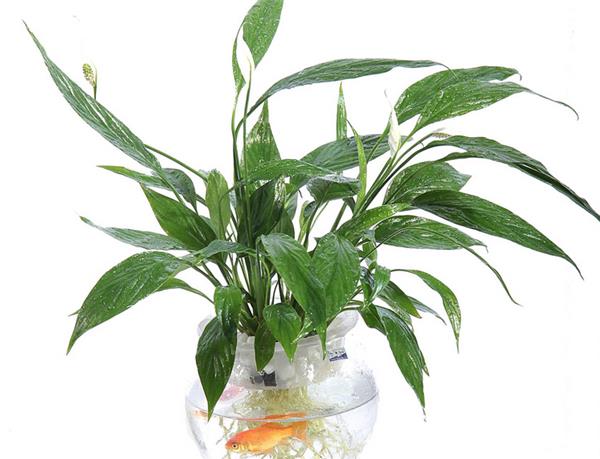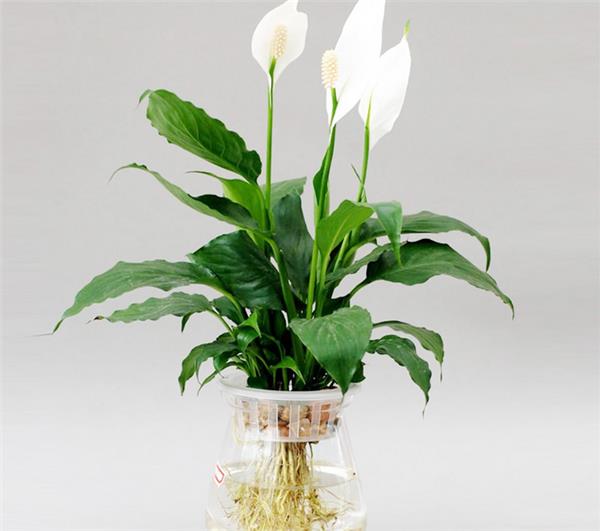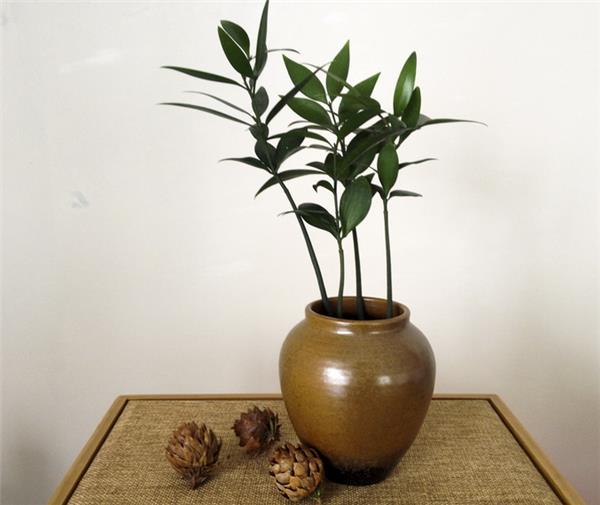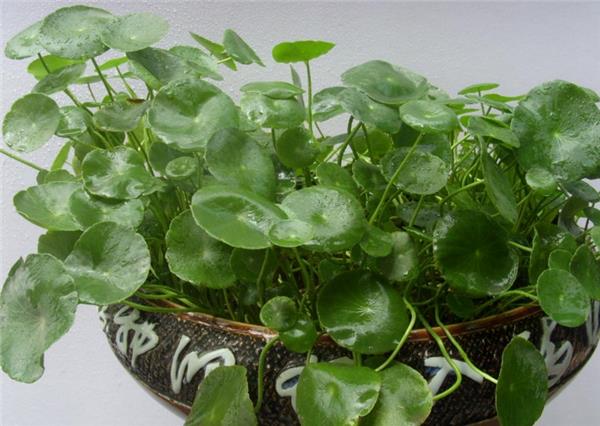Causes and solutions of yellowing of hydroponic plants
The leaves of hydroponic plants will inevitably turn yellow. Let's take a look at the causes and solutions of the yellowing of hydroponic plants.

Causes and solutions of yellowing of hydroponic plants
Reason 1, the yellowing of leaves is likely to be caused by the lack of nutrients in the nutrient solution. With the growth of hydroponic plants, the nutrients of the culture medium in culture vessels can not meet the needs of hydroponic plants, and the leaves of hydroponic plants will yellowing. Or you have not changed the tap water for a long time, and the nutrients in the tap water are basically absorbed by the plants, so it leads to yellowing. Corresponding measures: at this time, we should appropriately increase the concentration of the culture medium, each time in the configuration of the culture medium, drop a few more drops of the culture medium to add nutrition to the hydroponic plants; remember to change the water regularly and change the culture medium.
Reason 2, the habits of each plant is different, some like the sun, too much exposure or no sunlight will lead to yellow leaves. Measures: know the habits of the hydroponic plants you cultivate, how often you need to bask in the sun, and where to put it in the sun, and then take appropriate measures according to your habits.

Reason 3, temperature. Temperature is also one of the necessary conditions for the growth of hydroponic plants, and the indoor temperature is suitable for most hydroponic plants. Measures: check to see if the temperature of the plant is affected by household appliances.
Reason 4, the environment of root growth. Problems with the roots can also lead to yellowing of leaves. If the roots of hydroponic plants are soaked in water too much, it will make it difficult for plants to absorb oxygen and prevent leaves from photosynthesis. Measures: adjust the soaking condition of the root, increase the height of the water surface, about half of the soaking water and half of the water can be placed in the air.
Reason 5, too much nutrient solution leads to yellowing of leaves, and some hydroponic plants do not need too much nutrition to survive, so the reason for yellowing of leaves may also be the use of too much nutrient solution. Measures: dilute the nutrient solution and reduce the intake of plant nutrient solution.

Key points for the maintenance of hydroponic plants
1. Change the water regularly, and take the slightly turbid water in the hydroponic container as the principle of changing water. In general, the water is changed every 10 to 15 days in spring and autumn, about 5 days in summer and every 30 days in winter.
2. Each time the water is changed, the roots and containers of hydroponic flowers should be washed with clean water, and the dust on the leaves should be wiped with a wet cloth to keep the leaves clean, pruning withered branches, leaves and rotten roots.
3. When changing water, each liter of clear water (cold boiled water, mountain spring water, magnetized water and other water sources is better, if tap water needs to be clarified for more than 6 hours), add 4 bottle caps of hydroponic nutrient solution, and shake well, it can be used for hydroponic flowers.
4. When adding water, the number of flower roots immersed in water should not exceed 1 stroke 2, the rest of the roots should be left in the air of the hydroponic container, and keep the roots sagging naturally as much as possible; the water in the hydroponic container can be shaken in the future.
5. Pay attention to maintaining ventilation and require the place to be placed with a certain air humidity. If the air humidity is not enough, you can spray misty water into the air to increase the air humidity. Usually, you can spray a small amount of foggy water to the leaves, or wipe the flower leaves with a wet cloth to keep the leaves clean and dust-free.

6. Hydroponic flowers can generally be placed in offices, conference rooms, halls, coffee tables, computers, kitchens, bedrooms, living rooms, bathrooms and other indoor environments, as far as possible in places with plenty of indoor sunshine (that is, sunny places, scattered light is more), but to avoid direct sunlight and cold wind blowing.
7. The indoor temperature should be controlled between 8 ℃ and 30 ℃. If the temperature is too high, we can take air conditioning refrigeration, water spray, water curtain cooling and other means to reduce the temperature properly, at the same time, we must strengthen ventilation. In winter, we should pay attention to heat preservation and overwintering, often accept scattered light or direct sunlight, if you encounter extremely low temperature, you can use a heater to increase the ambient temperature, and you can also cover hydroponic flowers from top to bottom with thicker transparent plastic bags. and open 3 to 4 holes in the plastic bag to facilitate ventilation and prevent cold wind blowing.
8. If the rotten roots of hydroponic flowers are found in peacetime, they should be removed in time and thoroughly. That is, first cut off the rotten root from the root with clean branch shears, then disinfect the root with 0.5% potassium permanganate for 10 minutes, rinse it with clean water, and then use clear water (or magnetized water) to take planting basket fixed suspended water for 7 days and 15 days, and change water every two days. After growing new aquatic roots, you can add appropriate amount of nutrient solution to normal hydroponics.
9. If possible, 1% hydrogen peroxide (that is, 3% hydrogen peroxide) or 0.1% potassium permanganate are added to the hydroponic nutrient solution to facilitate the release of oxygen or inhibit the growth of harmful bacteria and algae in the water; of course, a small amount of microbial fertilizer or activated carbon can also be added to the hydroponic nutrient solution to improve water quality and make it more conducive to plant root absorption.
10. According to your personal preference, you can put a small amount of goldfish, aquatic plants and other aquatic organisms in the hydroponic container, and you can add colorful playstones to enhance its appreciation.
And rinse clean with clean water, then use clear water (or magnetized water) to take fixed suspended water for 7 days and 15 days, change the water every two days, wait for the growth of new water roots, you can add appropriate amount of nutrient solution to normal hydroponic culture.
9. If possible, 1% hydrogen peroxide (that is, 3% hydrogen peroxide) or 0.1% potassium permanganate are added to the hydroponic nutrient solution to facilitate the release of oxygen or inhibit the growth of harmful bacteria and algae in the water; of course, a small amount of microbial fertilizer or activated carbon can also be added to the hydroponic nutrient solution to improve water quality and make it more conducive to plant root absorption.
10. According to your personal preference, you can put a small amount of goldfish, aquatic plants and other aquatic organisms in the hydroponic container, and you can add colorful playstones to enhance its appreciation.
Related
- Wuhan Hospital Iron Tree Blooming Result Was Instantly Frightened by the Gardener Master
- Which variety of camellia is the most fragrant and best? Which one do you like best?
- What is the small blue coat, the breeding methods and matters needing attention of the succulent plant
- Dormancy time and maintenance management of succulent plants during dormancy
- Minas succulent how to raise, Minas succulent plant pictures
- What are the varieties of winter succulent plants
- How to raise succulent plants in twelve rolls? let's take a look at some experience of breeding twelve rolls.
- Attention should be paid to water control for succulent plants during dormant period (winter and summer)
- Watering experience of twelve rolls of succulent plants
- Techniques for fertilizing succulent plants. An article will let you know how to fertilize succulent plants.



